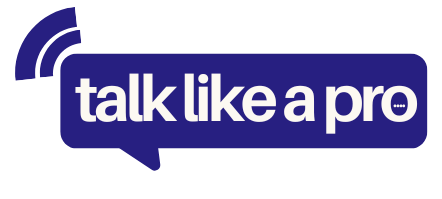Ah, the grammar police! We’ve all encountered them online, swooping in with their virtual red pens to correct our typos and misplaced apostrophes. But let’s be real – nobody likes a smug know-it-all ruining their day over a tiny mistake.
So how can we help improve online grammar without being total jerks about it? That’s what we’re diving into today, my fellow word nerds!
I’ll admit, I used to be that annoying grammar nazi leaving snarky comments everywhere. (Cringe, I know.) But over the years, I’ve learned there are much better ways to spread good grammar without making enemies.
We’ll explore the delicate art of tactful corrections, clever strategies to enlighten without insulting, and how to actually make friends while fixing typos. Wild, right?
By the end of this article, you’ll be armed with ninja-level skills to elevate online writing WITHOUT stomping on anyone’s self-esteem. Let’s make the internet a friendlier (and more grammatically correct) place together!
The Grammar Conundrum: To Correct or Not to Correct?
Ah, the eternal question that plagues us grammar enthusiasts. You’re scrolling through your social media feed when BAM! A glaring grammatical error assaults your eyes.
Do you ignore it and move on? Or do you swoop in, cape fluttering, to save the day with your grammatical wisdom?
It’s a tricky situation, my friends. On one hand, we want to help improve literacy and communication. On the other hand, nobody likes an insufferable know-it-all. (Trust me, I’ve been there.)
So what’s a well-meaning grammar nerd to do? Let’s break it down.
The Case for Correcting
There are some solid reasons to consider offering grammar corrections:
-
It can genuinely help people learn and improve their writing skills.
-
Clear communication is important, especially for businesses or public figures.
-
Some people actually appreciate being corrected (politely) so they don’t make the same mistake again.
-
It can prevent misunderstandings or confusion caused by grammar/spelling errors.
The Case Against Correcting
But hold your horses before you start wielding that red pen! Here’s why corrections can backfire:
-
It can come across as condescending or nitpicky, even if well-intentioned.
-
Not everyone cares about perfect grammar, especially in casual online settings.
-
It might embarrass the person or make them feel attacked.
-
Cultural and linguistic differences mean “correct” grammar isn’t always universal.
-
Let’s be honest – it can make YOU look like a pompous jerk.
So what’s the verdict? Should we correct or not correct?
The answer is… drum roll please… it depends! (I know, I know, not very satisfying.) But fear not! We’re about to dive into the nuanced art of WHEN and HOW to offer grammar guidance without being insufferable.
Know Your Audience: When (and When Not) to Correct
Alright, grammar warriors, before you charge into battle, let’s talk strategy. Knowing WHEN to offer corrections is half the battle.
Green Light: When Corrections are Welcome
There are definitely times when grammar tips are appropriate and even appreciated:
-
If someone specifically asks for proofreading or editing help. (Duh.)
-
On professional platforms like LinkedIn or company websites where polish matters.
-
For important documents like resumes, cover letters, or academic papers.
-
When errors could lead to serious misunderstandings or safety issues.
-
If you have an established relationship where casual corrections are cool.
Red Light: When to Hold Your Tongue (or Fingers)
On the flip side, there are plenty of situations where you should resist the urge to correct:
-
Casual social media posts or texts between friends. (Let people live, Karen!)
-
When someone is sharing vulnerable or emotional content. (Read the room, people.)
-
If English isn’t the person’s first language. (They’re already trying their best!)
-
On posts by children or those with learning disabilities. (Come on, that’s just mean.)
-
ANY time you’re feeling smug or superior about your grammar skills. (Check yo’self.)
The key is to use your judgment and consider the context. Is your correction actually helpful, or are you just showing off?
When in doubt, it’s usually best to let minor errors slide. The grammar police aren’t actually saving lives here.
The Art of the Gentle Correction: Tactics for Tact
Okay, so you’ve decided a correction IS warranted. Now comes the tricky part – how to do it without being a total jerkface. Let’s explore some ninja-level tactics for offering grammar guidance with grace:
The Compliment Sandwich
This classic technique involves wrapping your correction between two genuine compliments. For example:
“Great article! I loved your point about X. Just a tiny note – I think you meant ‘their’ instead of ‘there’ in paragraph 3. But overall, fantastic job!”
The Self-Deprecating Approach
Knock yourself down a peg to make the other person feel less defensive:
“I hate to be ‘that guy,’ but I noticed a small typo. I’m constantly making similar mistakes myself!”
The Humble Question
Frame it as seeking clarification rather than correcting:
“I’m a little confused by this sentence – did you mean to say X instead of Y? Or am I misunderstanding?”
The Private Message
If possible, offer corrections privately instead of publicly calling someone out:
“Hey! Loved your post. I noticed a couple of small typos and wasn’t sure if you’d want to fix them. No worries if not, just thought I’d mention it!”
The Useful Resource
Instead of directly correcting, share a helpful grammar guide or tool:
“If you’re interested in polishing your writing, I’ve found this free grammar checker super helpful: [link]”
The Group Correction
Address common errors to a general audience rather than singling anyone out:
“PSA: A friendly reminder that it’s ‘you’re awesome’ not ‘your awesome.’ English is weird, am I right?”
The goal with all of these approaches is to be helpful without being condescending. Remember – you’re offering assistance, not judgement!
Beyond Corrections: Cultivating a Culture of Good Grammar
Here’s a wild idea – what if we focused less on catching mistakes and more on spreading grammar love?
Instead of being the grammar police, we could be grammar… cheerleaders? (Work with me here, people.)
Let’s explore some positive ways to elevate online writing without resorting to corrections:
Lead by Example
The best way to encourage good grammar? Use it yourself! Take pride in crafting well-written posts and comments.
Celebrate Great Writing
When you see a beautifully constructed sentence or clever wordplay, give it a shoutout! Positive reinforcement works wonders.
Share Grammar Tips & Tricks
Post interesting grammar facts, memory aids, or writing tips. Make it fun and accessible rather than stuffy.
Create Grammar Memes
Who says grammar can’t be funny? Whip up some witty memes about common errors or linguistic quirks.
Host Writing Challenges
Encourage creativity AND good grammar by hosting writing prompts or challenges in your online communities.
Recommend Writing Resources
Share your favorite grammar guides, style books, or writing tools to help others improve their skills.
Normalize Asking for Help
Make it clear that it’s okay (and even admirable) to ask for proofreading or grammar advice. We’re all learning!
By focusing on the positive aspects of language, we can create an environment where good grammar is valued without shaming those still learning.
Embracing Imperfection: The Human Side of Grammar
Now, my fellow grammar enthusiasts, it’s time for some real talk. Are you sitting down? Good.
whispers dramatically Sometimes… grammar doesn’t actually matter that much.
I KNOW, I KNOW. Blasphemy! But hear me out.
In our quest for linguistic perfection, it’s easy to forget that language is ultimately about COMMUNICATION. And sometimes, a perfectly grammatical sentence can actually hinder that goal.
Consider this:
-
Colloquialisms and slang often break grammar rules, but they’re vital for cultural expression.
-
Adhering too strictly to grammar can make writing feel stiff and unnatural.
-
Creative writing often intentionally breaks rules for stylistic effect.
-
Non-native speakers may make “mistakes” that are actually correct in their language.
-
Regional dialects have their own valid grammatical structures.
The point is, language is beautifully messy and constantly evolving. While it’s great to strive for clarity and correctness, we shouldn’t let perfect be the enemy of good.
So the next time you spot a dangling participle or misplaced apostrophe, take a deep breath. Ask yourself: “Does this actually impede understanding? Or am I just being pedantic?”
Sometimes, the kindest grammar correction is no correction at all.
Conclusion: Grammar for Good, Not Evil
And there you have it, folks – the delicate art of correcting grammar without being a total jerk about it. Let’s recap our key takeaways:
-
Consider the context before offering corrections.
-
When you do correct, use tact and kindness.
-
Focus on fostering a positive grammar culture rather than just catching mistakes.
-
Remember that perfect grammar isn’t always the end-all-be-all of communication.
At the end of the day, our goal should be to help people communicate more effectively, not to prove how smart we are.
So go forth, my grammar warriors! Spread linguistic light, not judgment. Together, we can make the internet a more grammatically correct (and friendlier) place – one tactful correction at a time.
Now if you’ll excuse me, I need to go triple-check this article for typos. The irony of a grammar error here would be too much to bear!




